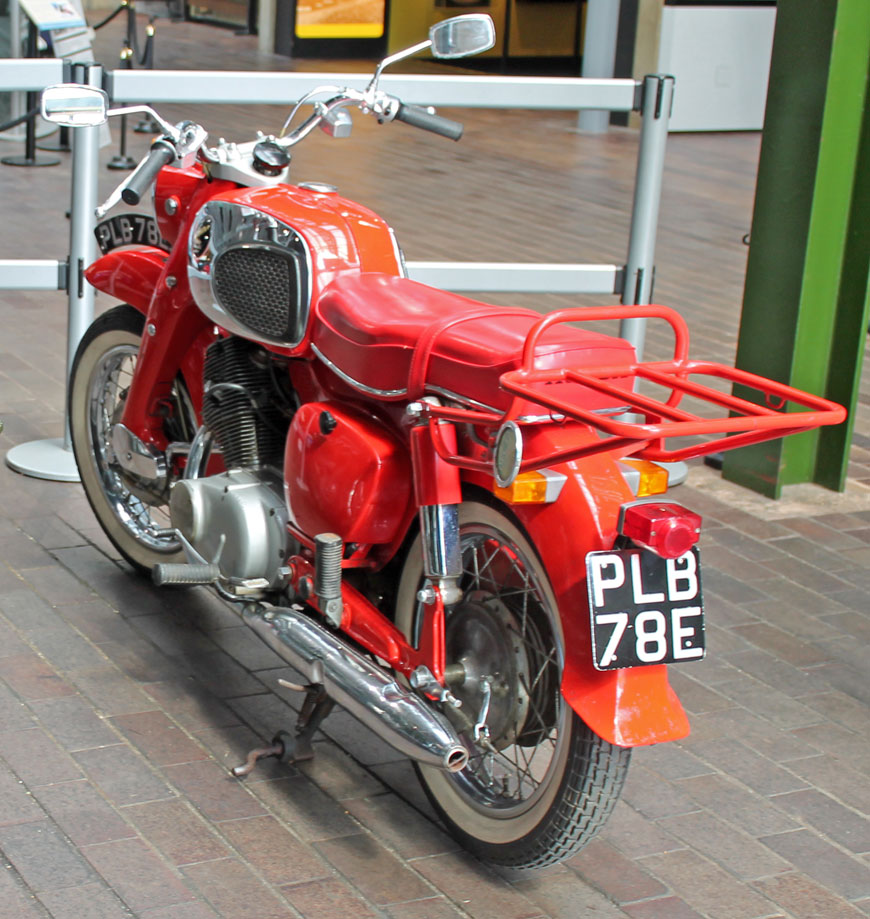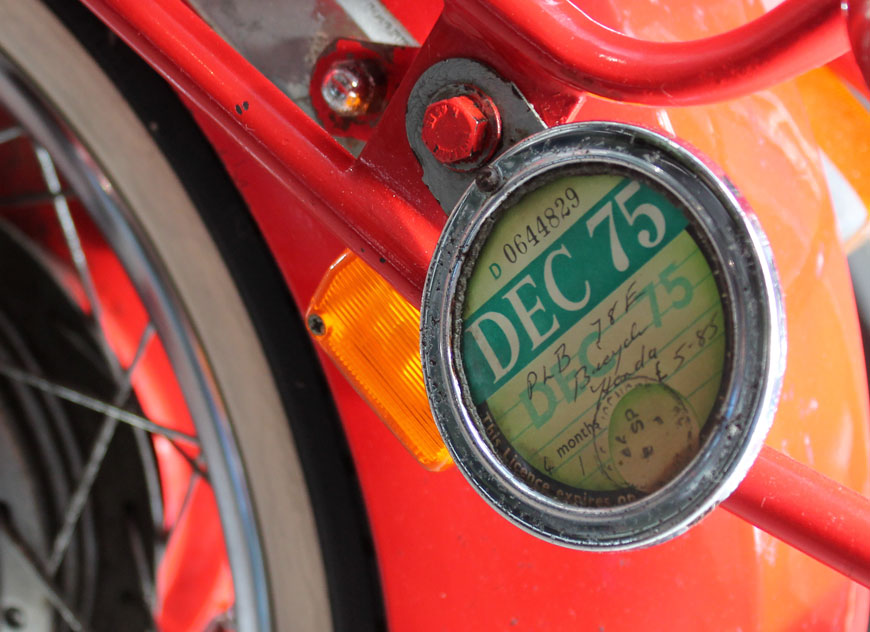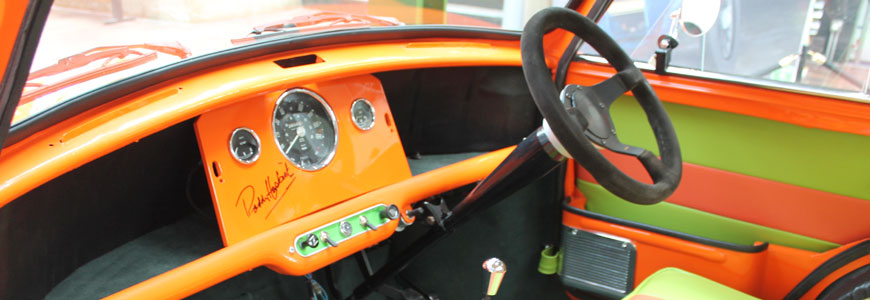
The start of summer is already proving to be a busy one for engineers in the National Motor Museum workshop, with the creation of a new exhibition in the museum, exciting additions to the collection and the return of old treasures from storage.
The Art of Kustom
To prepare for the museum’s exciting summer exhibition The Art of Kustom, the workshop team was tasked with collecting a star exhibit for the showcase of customiser Andy Saunders’ most eye-catching creations.
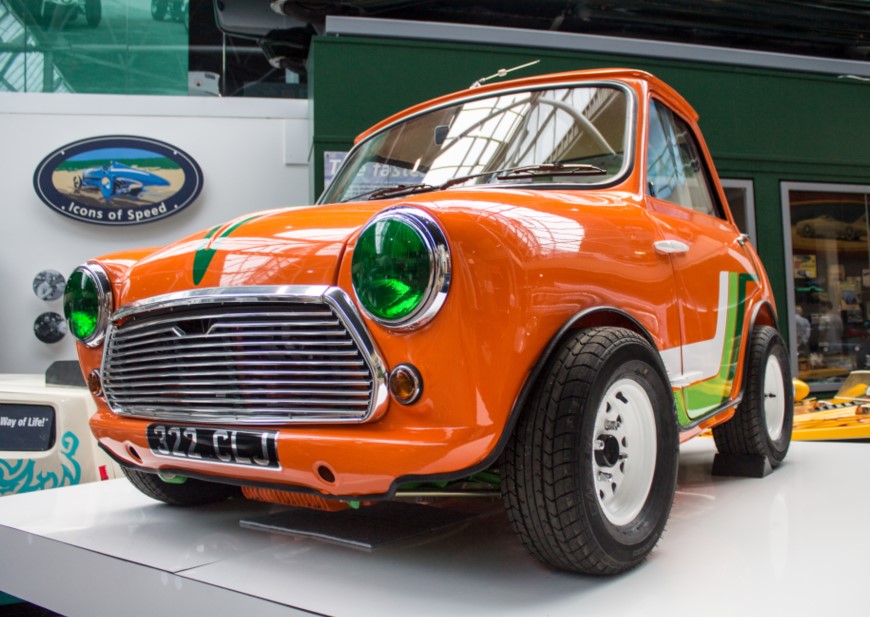
The drastically shortened Mini Ha Ha has joined Andy’s road-going speedboat, a Citroen that looks like a spaceship, a speed-breaking Reliant Rialto raced on the Bonneville Salt Flats and his latest creation, stunning art deco-style Metropolis, which was made from a rusty 1939 Peugeot 202.
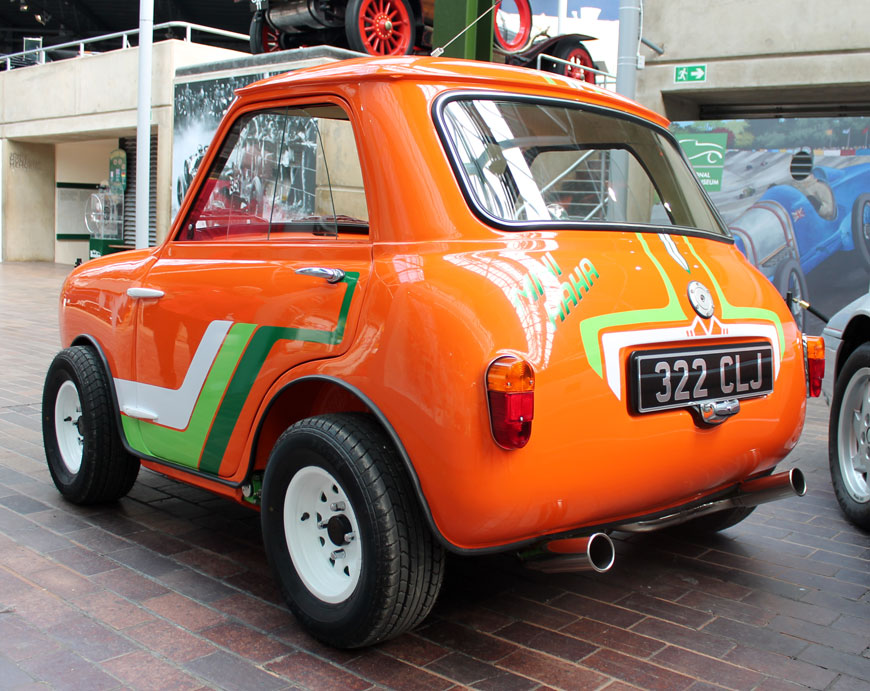
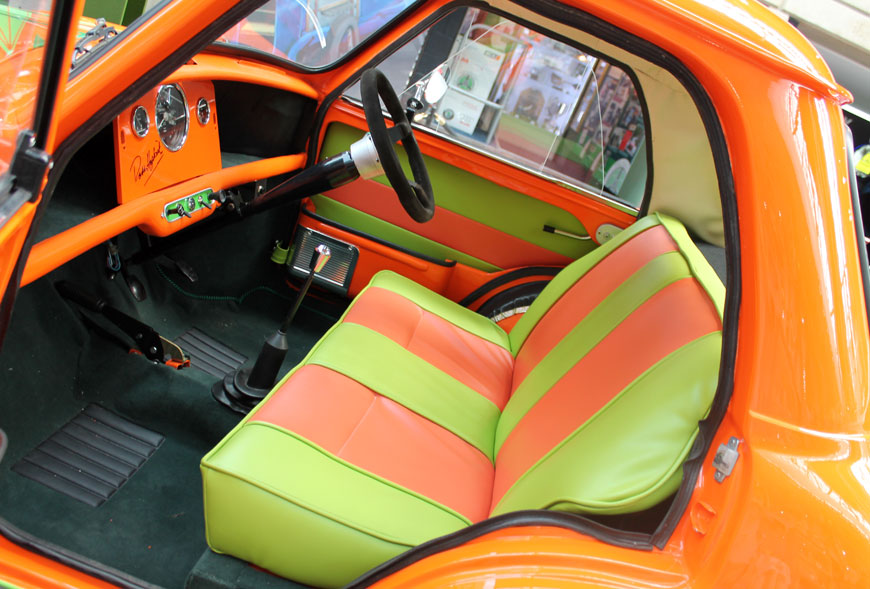
Mini Ha Ha is one of Andy’s most famous cars from his 40-year career and also one of his earliest creations. The new owner has painstakingly restored it to its original prime condition, after finding just the body shell in a field in Ireland. The car was brought by ferry from Ireland to Andy’s Dorset base, where the workshop team picked up the baton to trailer it to Beaulieu.
Mini Ha Ha is on display in The Art of Kustom in the National Motor Museum until September 16th.
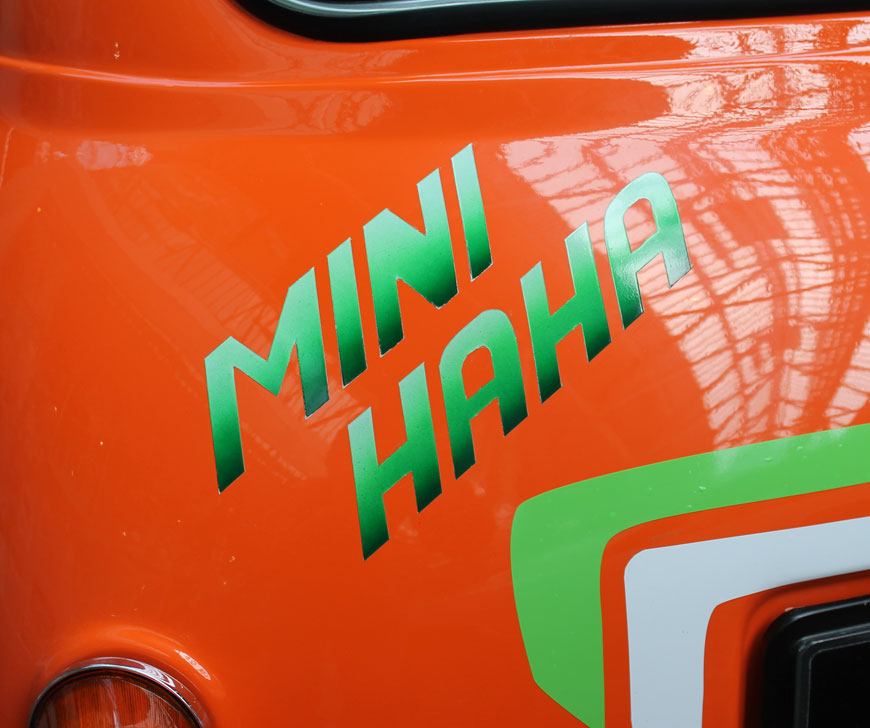
Mobile shops from a bygone era
Mobile shops were once a familiar sight, stocking goods found in village stores. These commercial vehicles were driven to hard-to-access areas for residents to buy their supplies and were a real lifeline for many communities.
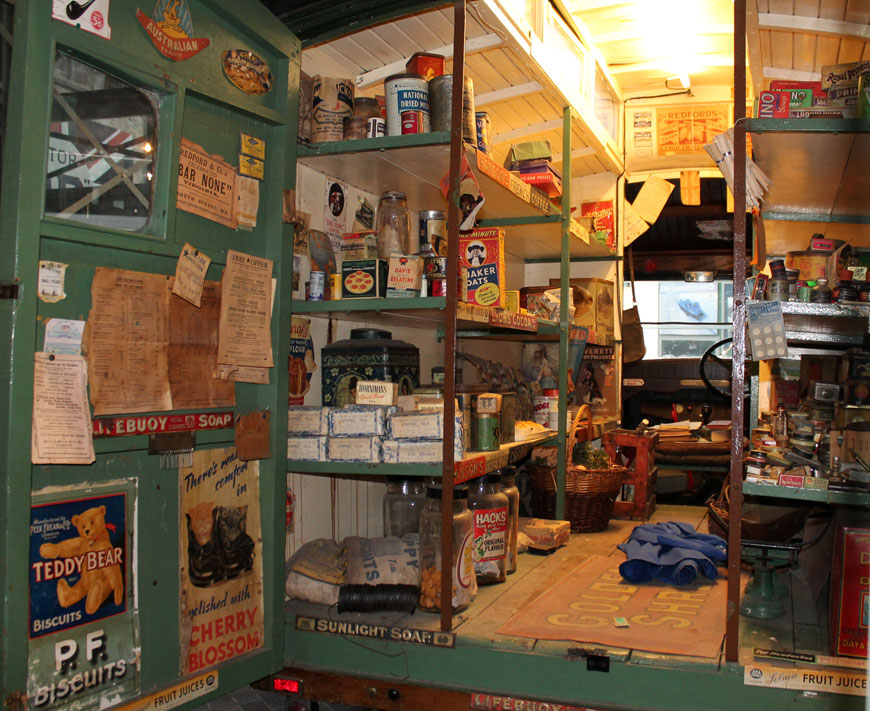
The collection includes no less than two preserved mobile shops built on Morris Commercial chassis, both in their original condition. One is a 1933 Morris Commercial T2, originally used as a mobile grocer’s shop in Sussex, which has gone to a specialist for skilled bodywork restoration.
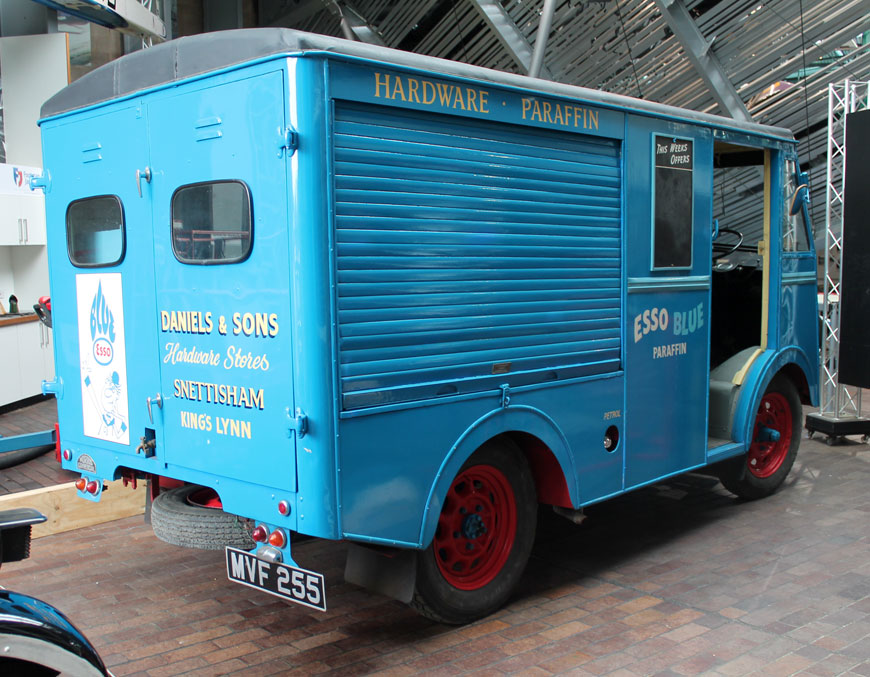
While the other, a 1951 Morris Commercial PV 15/20cwt has returned from storage. One of just seven roadworthy PVs in existence, this rare machine is exactly as it was when first converted into a mobile hardware shop by its original owners. In service in Norfolk for 24 years, it was restored in the late 1970s to as-new condition. Now visitors can see this fascinating piece of motoring history up close once more in the museum.
Beetle drive
The workshop engineers recently turned their attention to the 1953 Volkswagen Type I Beetle, which has been on display in the museum for several years and been waiting to stretch its wheels!
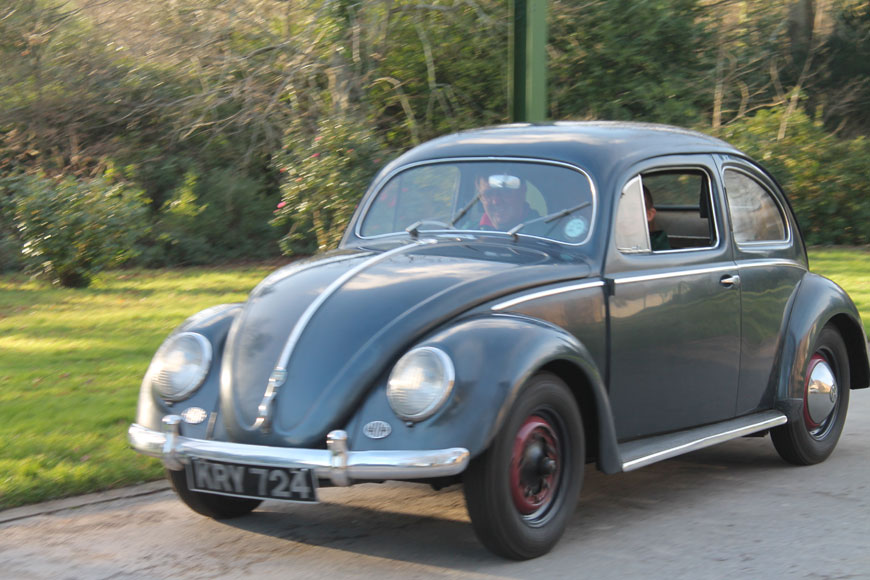
Although hard to imagine, when this early Export version of the Beetle was built in 1953 Volkswagens were a rare sight on British roads. Within a decade, 100,000 Volkswagens had been sold in Britain and the marque was already on its way to becoming one of the nation’s favourites. This Beetle has been at Beaulieu since 1963 when it was presented to Edward, Lord Montagu by Volkswagen to celebrate this sales success.
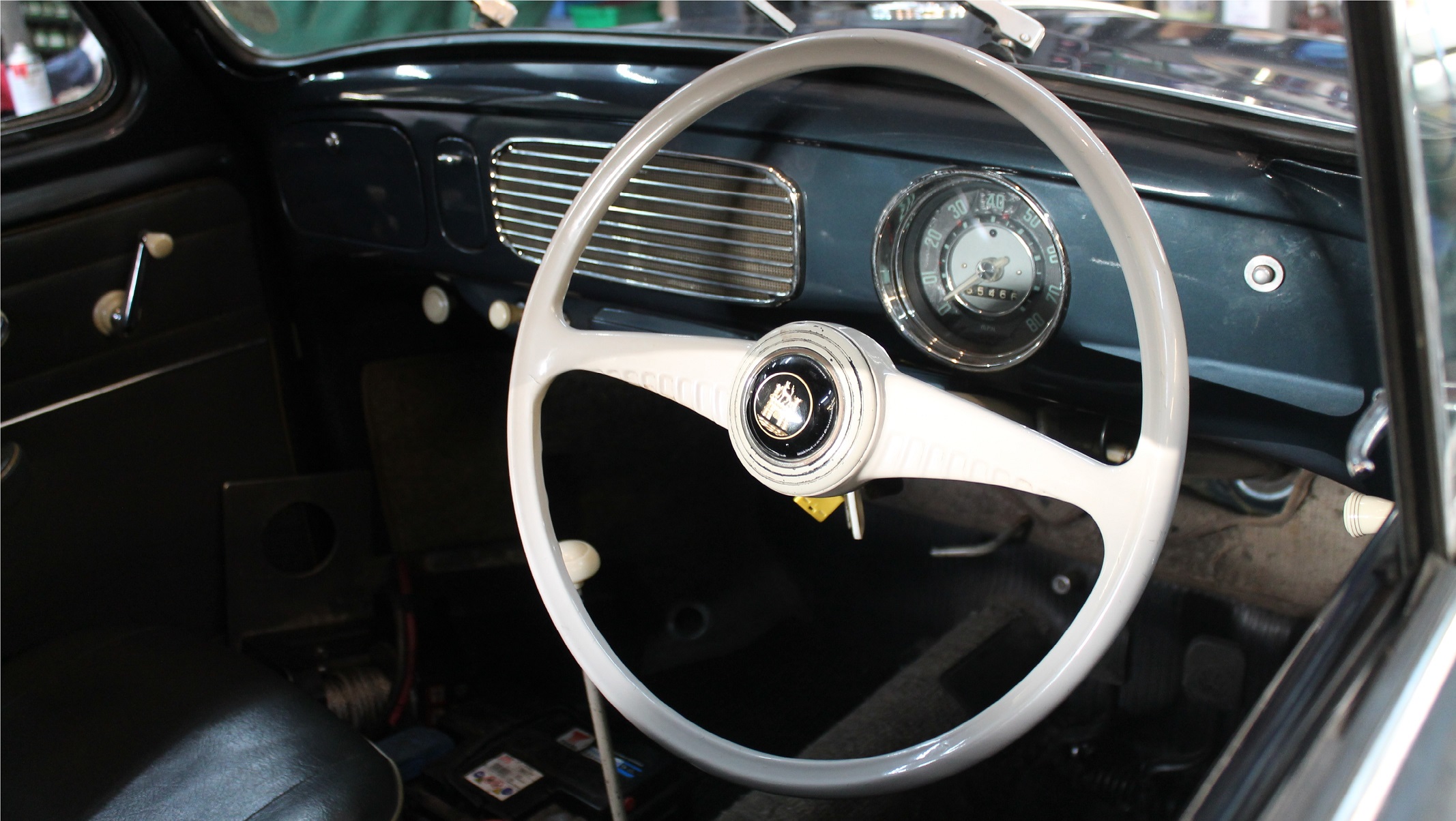
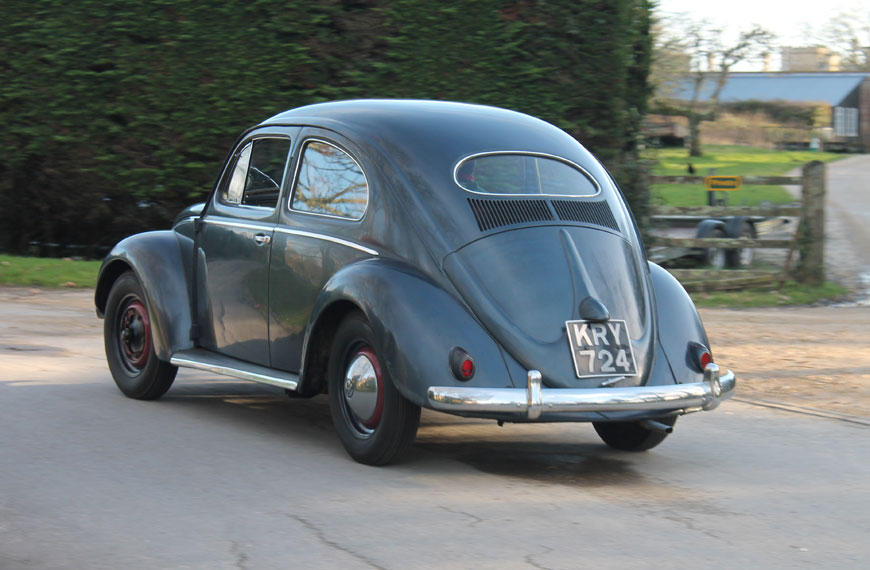
Once deteriorated fuel lines have been replaced and a new battery and petrol added, the Beetle’s rugged 1131cc flat-four engine fired up without difficulty. The brakes were serviced and the rest of the car was thoroughly inspected, before it was taken on a triumphant test run around the Beaulieu grounds. With a clean bill of health, the Beetle is now back on display in the museum.
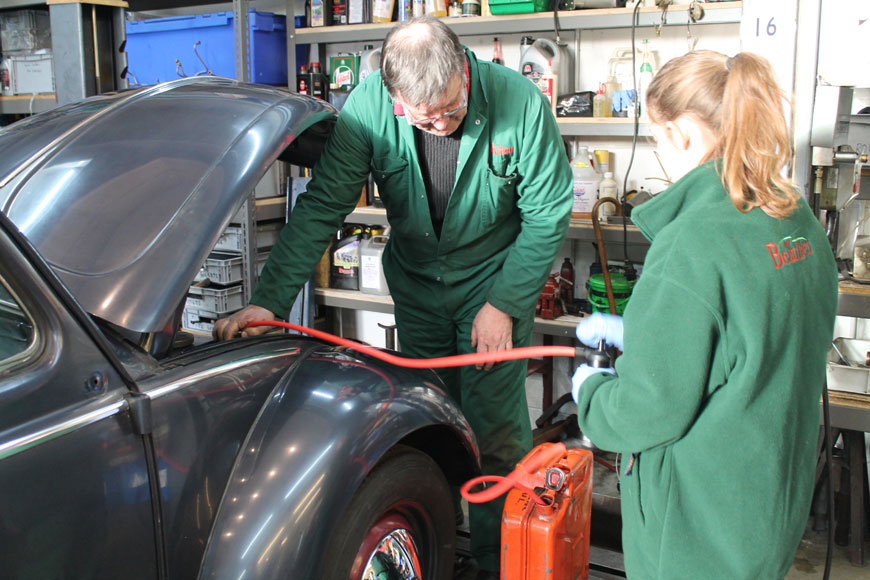
Fit for a princess
One or two treasures from the collection are tucked away, waiting for their time to shine in the museum. One such vehicle is the 1937 Ford V8 Utility, which has returned to the workshop for a check-over following years in storage.
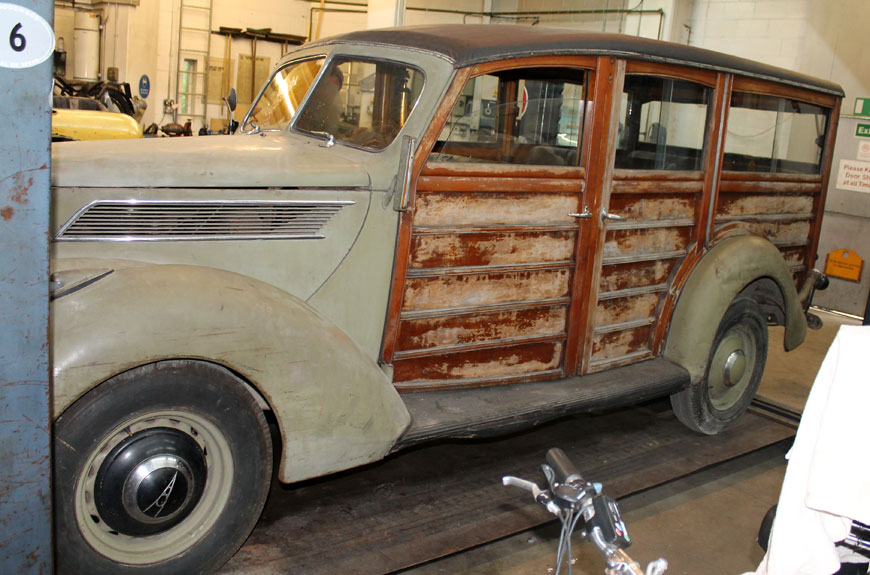
With its wooden-framed station wagon bodywork and streamlined grille and headlamps, the Ford is an attractive ‘woodie’. Despite its transatlantic looks, it was constructed in England at Ford’s Dagenham works, at a time when British buyers could choose anglicised right-hand drive versions of American V8-powered Fords.
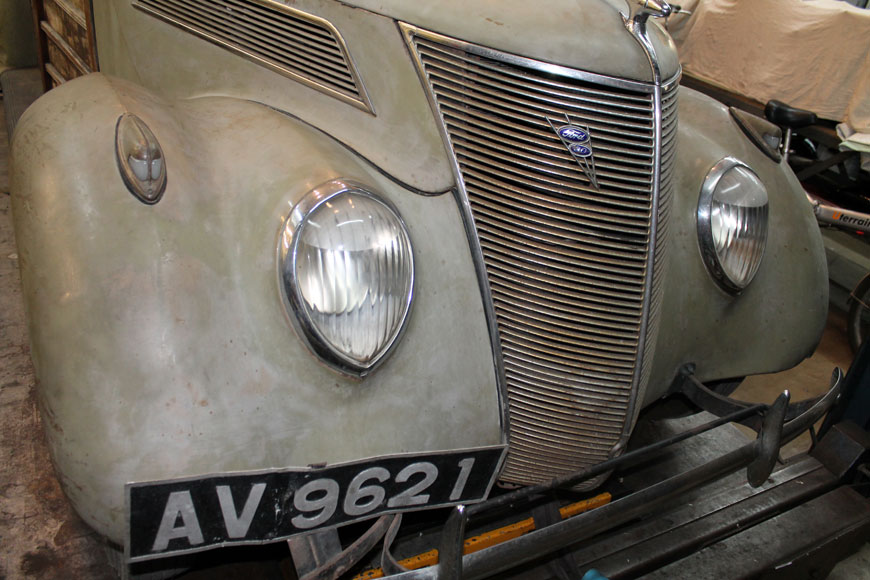
What makes this Ford unusual is its originality. Once owned by Princess Arthur of Connaught, the car is still as it was when used for taking grouse parties into the hills at Braemar in Scotland. By the time its working life had come to an end and the car was laid up, it had covered just 38,000 miles.
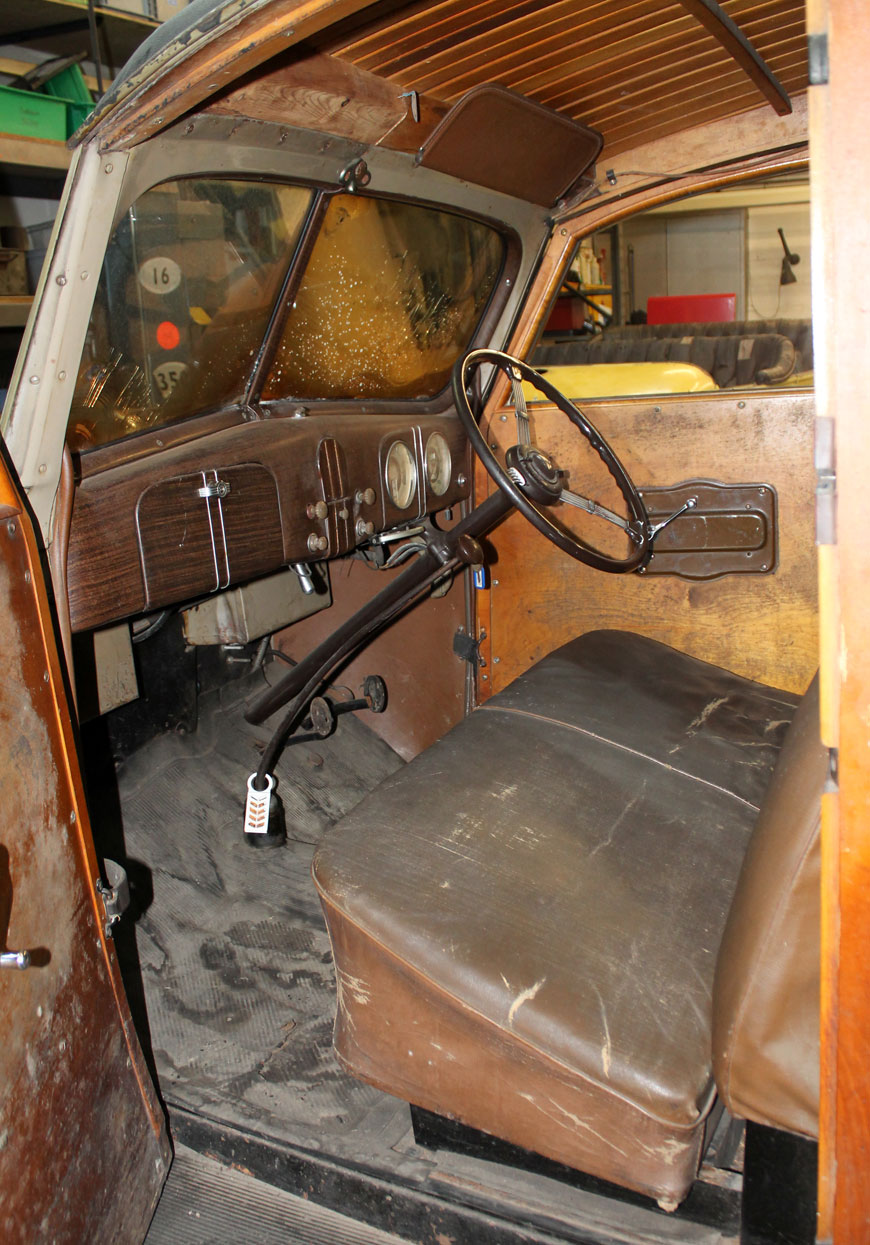
Joining the collection in 1982, it has been kept in storage but workshop engineers have dusted it down to assess its condition and determine what maintenance work needs to be done to continue to preserve it. Its next step will be decided by the outcome of that assessment.
Motorcycle arrivals
The arrival of new exhibits is always an exciting time but two historic machines have caused quite a stir with Beaulieu’s motorcycle enthusiasts.
Generously donated to the collection is a 1967 Honda C77 Dream, while a 1954 Matchless G3/LS Auxiliary Fire Service motorcycle has arrived on loan from its proud owner. Originality links these two first-class motorcycles, which are both in remarkable condition.
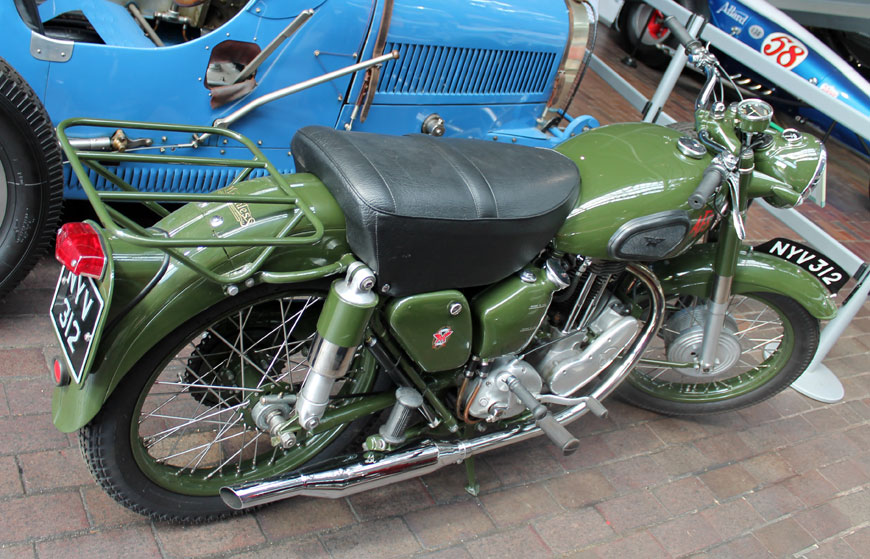
The Matchless, which was originally supplied to the government-run Auxiliary Fire Service, has covered less than 10,000 miles over the past 64 years. The Honda has received even less use, with 5,600 miles on its odometer. A superb example of this successful model, the Honda was used by its original owner for just eight years before being taken off the road and carefully stored.
